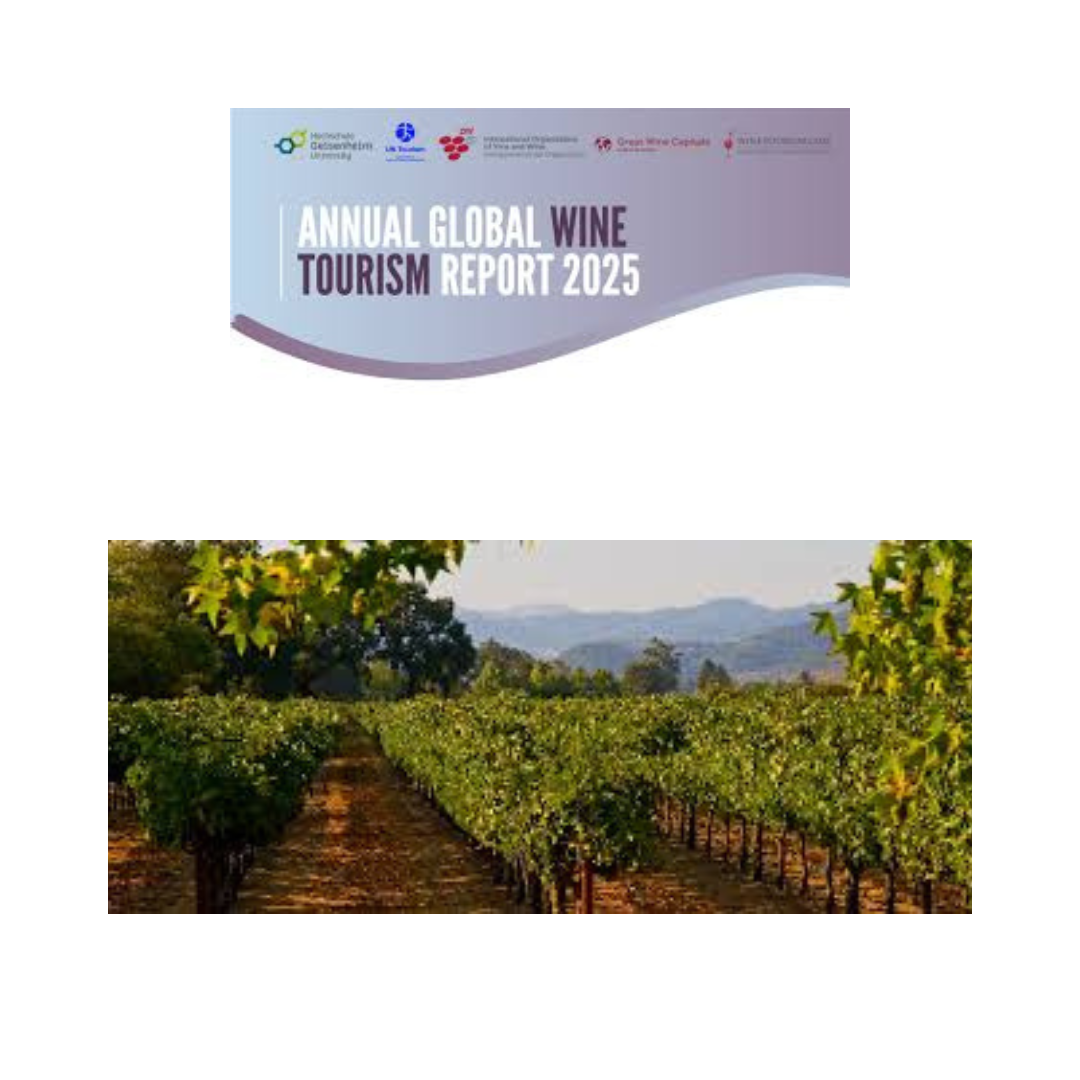The recently published Global Wine Tourism Report 2025 marks a significant milestone for the international wine and tourism industries. Conducted by Hochschule Geisenheim University in collaboration with UN Tourism, the International Organisation of Vine and Wine (OIV), the Great Wine Capitals Global Network (GWC), and WineTourism.com, this comprehensive study draws on data from 1,310 wineries across 47 countries, providing the most extensive global analysis of wine tourism to date.
According to Professor Gergely Szolnoki, who led the research, the report offers a global perspective on current market conditions, consumer behaviour, and strategic innovation, helping the sector better understand the evolving expectations of wine tourists worldwide.
Over the past decade, wine tourism has become an increasingly dynamic force in the global economy. When effectively managed, it not only drives rural and regional development but also safeguards cultural heritage, environmental sustainability, and community well-being. Despite its rapid growth, the industry has long lacked robust international data, an information gap this report aims to fill through a systematic, evidence-based annual survey.
Key Findings reveal several structural and behavioural trends shaping the future of wine tourism:
Economic Contribution: Wine tourism continues to serve as a critical economic driver, generating significant revenue and employment in local and rural economies.
Profitability: Two out of three wineries report profitability from tourism, accounting for nearly 25% of total revenue.
Sustainability: Environmental and social sustainability are increasingly central to winery strategies, with two-thirds rating them as “important” or “very important.”
Regional Disparities: Europe reports rising visitor numbers, while several overseas regions experience declines, illustrating uneven recovery patterns.
Engagement: One in four wineries which have not yet engaged in wine tourism has already decided to enter the field, and half are considering doing so in the near future.
Demographics: The 45–65 age group remains dominant; however, millennials and younger travellers (25–44) represent a rapidly expanding segment, drawn to experiences combining education, gastronomy, and sustainability.
Challenges: Economic pressures, falling wine consumption, regulations, labour shortages, and digitalization demand adaptive responses.
Core Activities: Tastings, cellar visits, and vineyard tours continue to form the backbone, offering authentic experiences and personal connections.
Trends: Growing demand for authentic, local, culinary, eco-friendly, and nature-based offers, reinforced by strong digital engagement.
Strategies: Innovation is driven by storytelling, social media, food pairings, local partnerships, education, and cultural events.
Innovation & Investment: Wine tourism is widely regarded as essential for competitiveness, although actual investment levels vary.
Outlook: Half of wineries plan further investment, most anticipate growth, and nearly two-thirds see wine tourism as a resilience tool.
The Global Wine Tourism Report 2025 establishes a unique international benchmark, reaffirming wine tourism’s role as a vital catalyst for economic growth, cultural exchange, and sustainable development within the global wine landscape.
The Full report and executive summary are available at:
👉 www.hsgeisenheim.de/gwtreport

